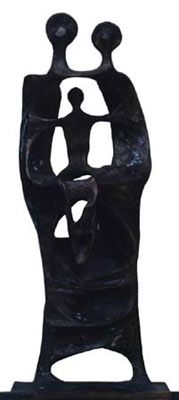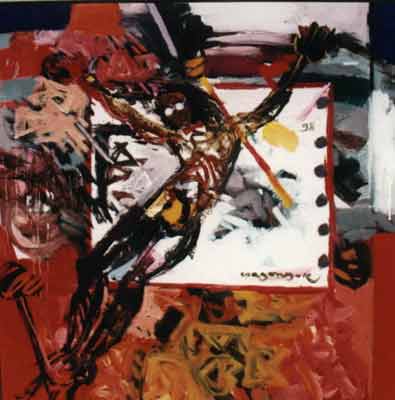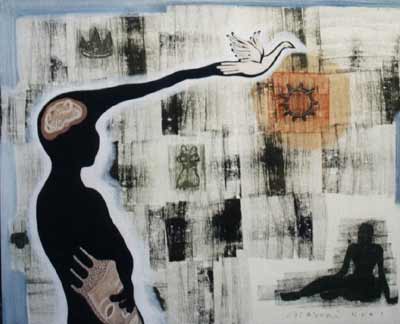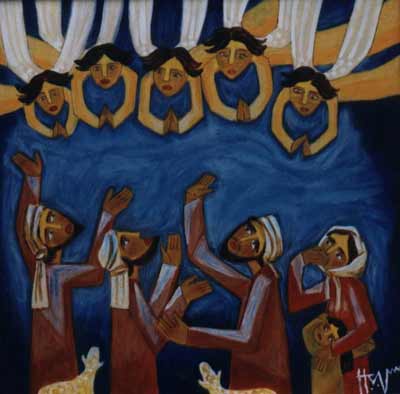
Go to the site if you would like to read the entire article. You may google search some of the images that were in this exhibition. I did not post them as not to offend any readers.
Why I researched Andres Serrano ( Cuban born) was because it is hard finding artwork about "religion." I am finding a lot of images portraying religion but I am not finding many images about how people feel respond interact with religion. I hope to find more besides Serrano's famous "Piss Christ." ( An image shown in 1987 which you may also google if you are interested in seeing a larger image and reading the story.) Is this art? It is obviously offensive. Is one offensive piece enough to make you (in)famous?
in seeing a larger image and reading the story.) Is this art? It is obviously offensive. Is one offensive piece enough to make you (in)famous?































 "Wandering Souls"
"Wandering Souls"


